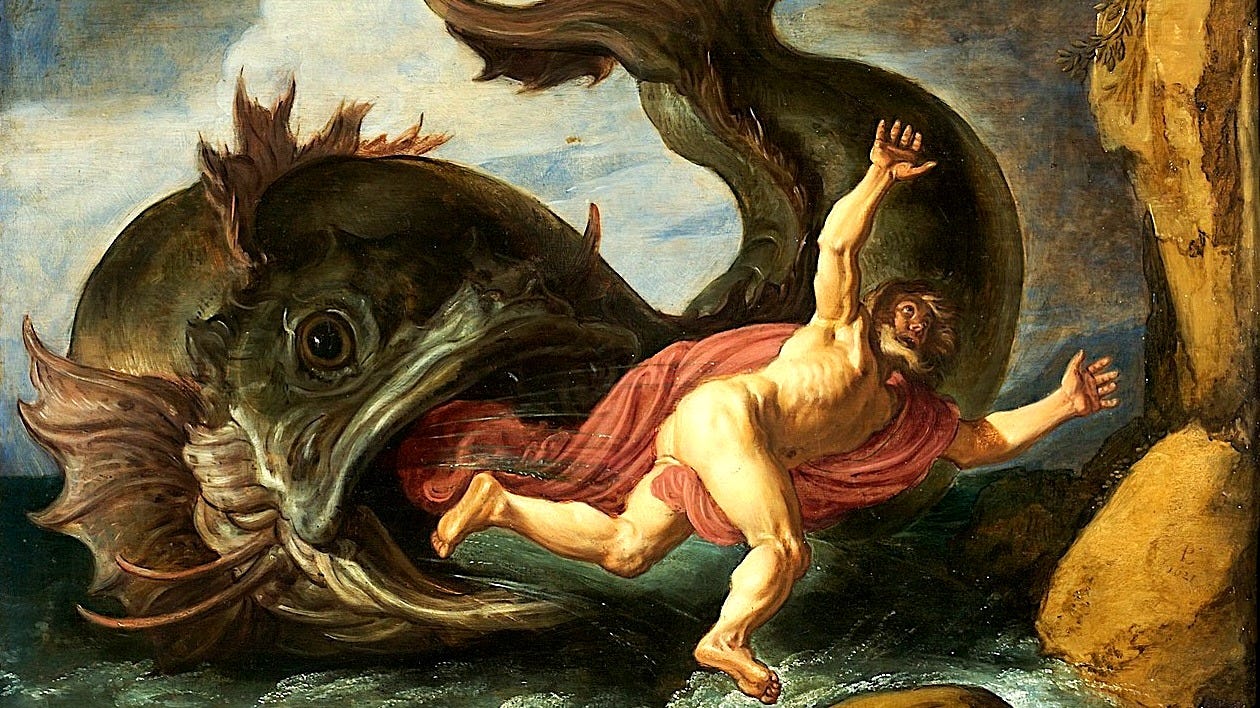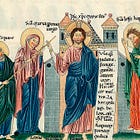Why does Christ refuse to prove himself on demand?
And what was 'the sign of Jonas' that Our Lord mentioned?

And what was 'the sign of Jonas' that Our Lord mentioned?
Editor’s Notes
In this piece, Fr. Coleridge tells us…
How Christ rebuked those who demanded signs yet refused to believe.
That true faith does not demand endless proof but recognises the signs already given.
Why the sign of Jonas was both a rebuke and a final proof of Christ’s mission.
He shows us that rejecting the signs of God is not ignorance but wilful blindness.
For more context on this episode, its significance and its place in the Roman Liturgy, see here:
Our Lord and his Slanderers
The Preaching of the Cross, Part II
Chapter II
St. Luke xi. 14-36
Story of the Gospels, § 103
Burns and Oates, London, 1887
Headings and some line breaks added.
Sung on the Third Sunday of Lent
Part I: How did Christ turn back the charge of casting out devils by Beelzebub?
Part II: The moment Christ announces his invasion of Satan’s kingdom
Part III: Did Christ rebuke the woman who praised his Mother?
Part IV: Why does Christ refuse to prove himself on demand?
Part V: Why does rejecting the truth lead to deeper darkness?
‘Seeking a sign’
‘And the multitudes running together, He began to say, This generation is a wicked generation, it seeketh a sign, and a sign shall not be given to it, but the sign of Jonas the prophet!’
St. Luke has already mentioned the seeking of a sign as another feature in which this preaching in Judea resembled that which had before been carried on in Galilee. Here, again, some of the people followed the lead of the Scribes and Pharisees. It seems, however, as if this disposition to demand a special sign was generally characteristic of the temper of the nation, and St. Paul mentions it afterwards as such. The nation had been divinely educated, so to speak, by a series of very marvellous manifestations.
Nor had the series in any way ceased in the new dispensation of the Kingdom of Heaven. For our Lord’s whole course had been marked by a succession of wonderful miracles, which besides being signs, were also works of the greatest mercy, reflecting in this respect the character of our Lord and of His Kingdom. Thus the miracles were not merely signs, simple displays of Divine power, for the sake of authenticating the mission of our Lord. The wickedness of that generation of which our Lord spoke consisted in their shutting their eyes to the signs by which God chose to speak to them, and capriciously asking for others, as if they were at liberty to choose how God was to manifest His will.
Jonas and the Queen of the South
The ‘sign of the Prophet Jonas’ has already been explained on the passage of St. Matthew where these words of our Lord are anticipated. Then our Lord had said:
‘For as Jonas was in the whale’s belly three days and three nights, so shall the Son of Man be in the heart of the earth three days and three nights.’1
Thus the sign here spoken of is the same as that which our Lord promised, in enigmatical language, to the priests at Jerusalem, when they asked for His authority after the first cleansing of the Temple, at the first Pasch after the Baptism. ‘Destroy this temple, and in three days I will raise it up.’2 And then St. John adds, that He spoke of the temple of His Body. This was the sign which was to be given to that generation, on which the truth of the Gospel as preached by the Church formally rests, the Resurrection of our Lord. It was a sign, and, in a certain sense, a sign alone, in that it was not a miracle of mercy to others in the ordinary way.
That one great sign was yet to come, but the people who had turned away from the evidence of the other miracles would reject that also.
The Father Coleridge Reader is a labour of love. But curating, cleaning up and publishing these texts takes a lot of time—and we like to give a little back to those who support the project with monthly/annual subscriptions.
Please consider joining to keep this project going!



